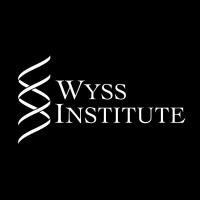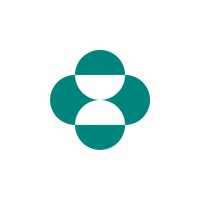
Bryan Sutherland
Postdoctoral Research Fellow at Wyss Institute at Harvard University- Claim this Profile
Click to upgrade to our gold package
for the full feature experience.
-
English Native or bilingual proficiency
Topline Score


Bio
James Heilmann
Bryan was an outstanding co-op for Carpenter. He was able to take on challenging assignments independantly. He worked at a good pace and was always willing to learn/do more.
James Heilmann
Bryan was an outstanding co-op for Carpenter. He was able to take on challenging assignments independantly. He worked at a good pace and was always willing to learn/do more.
James Heilmann
Bryan was an outstanding co-op for Carpenter. He was able to take on challenging assignments independantly. He worked at a good pace and was always willing to learn/do more.
James Heilmann
Bryan was an outstanding co-op for Carpenter. He was able to take on challenging assignments independantly. He worked at a good pace and was always willing to learn/do more.

Experience
-
Wyss Institute at Harvard University
-
United States
-
Biotechnology Research
-
200 - 300 Employee
-
Postdoctoral Research Fellow
-
Jul 2021 - Present
Developing novel synthetic tissue culture platforms to promote and guide the formation of vascular networks both in vitro and in vivo. (Advisor: Dr. Christopher S. Chen). -- Established robust strategy for functionalizing polysaccharides with ‘click’ functional groups resulting in tunable degrees of functionalization (DoF) ranging from 10 to 70% for bioconjugation of bioactive peptides or hydrogel fabrication -- Improved vascular density by an order of magnitude within synthetic hydrogel formulations containing sulfated heparin mimics that sequester paracrine signaling factors through electrostatic interactions -- Engineered a photopolymerizable peptide-crosslinked dextran hydrogel platform that promotes endothelial cell proliferation within microfluidic devices with photopatterned features of ~100 μm Show less
-
-
-
University of Delaware
-
United States
-
Higher Education
-
700 & Above Employee
-
Postdoctoral Researcher
-
Jan 2020 - Jun 2021
Worked in a cross-disciplinary team developing innovative photoresponsive hydrogels as versatile platforms for both drug delivery and tissue engineering applications. (Advisor: Dr. April M. Kloxin)-- Designed and executed scalable multistep syntheses of UV (365 nm) and visible light (400 – 500 nm) photodegradable hydrogels for the controlled and localized delivery of bioactive proteins over timescales ranging from minutes to days-- Characterized chemical stability, cleavage kinetics, and resulting products of photodegradable moieties within aqueous environments and confirming no cytotoxic byproduct generation-- Managed a team of four researchers designing a photoresponsive hydrogel platform that mimics natural basement membrane proteins and promotes functional monolayer formation of A549 alveolar basal epithelial cells for studying the origins of IPF in vitro-- Worked in a cross-functional team establishing a soft materials platform that accommodates all necessary unit operations in cell therapy manufacturing (i.e., phenotype separation, activation, transduction, and expansion) resulting in increased cell activation, proliferation, and transduction compared to current industrial biomanufacturing processes-- Incorporated photodegradable and redox-responsive functional groups into uniform microgels generated by flow focusing microfluidics for the controlled and on-demand release of monoclonal antibody (mAbs) Show less
-
-
Graduate Research Assistant
-
Aug 2014 - Dec 2019
Spearheaded the development of novel DNA analogues, self-assembling peptide nanomaterials, and photopolymerizable thermosets with broad applications in therapeutics, nanotechnology, and photolithography. (Advisor: Dr. Christopher J. Kloxin)-- Developed a scalable synthetic process to fabricate and purify sequence-specific DNA analogues on the gram scale that achieve near quantitative coupling and deprotection efficiencies (> 95%) -- Incorporated DNA analogues into multi-arm macromers to generate supramolecular hydrogels that selectively degrade in the presence of displacement strands and reversibly assembles under heat or strain -- Established a highly efficient on-resin method for macrocyclizing peptides that overcomes limitations of selectivity, long reaction times, and heat requirements using thiol-Michael click chemistry with a relative efficiency of over 95% within short timescales (< 1 h) all at room temperature-- Achieved selective and near quantitative (> 95%) bioconjugations of polymers, and nanoparticles to multifunctional coiled coil peptide nanorods possessing persistence lengths of ~30 µm and conjugate spacings of 8 nm-- Engineered a one-component Type II photoinitiation scheme for photo-CuAAC polymer networks to reduce the number of leachable additives within formulations resulting in materials with tunable glass transition temperatures (53 to 82 °C) -- Developed a novel visible light (470 nm) photochromic photoacid with minimal dark acidity and improved solubility in solvent free monomer resins for the generation of photoinitiated acid-catalyzed thiol-ene thermosets-- Mentored numerous undergraduate researchers, taught individual classes on topics related to polymer science, and aided in grant proposal writing Show less
-
-
-
Drexel University
-
United States
-
Higher Education
-
700 & Above Employee
-
Dual Bachelors and Masters Student
-
Sep 2009 - May 2014
Established electrospinning parameters and crosslinking conditions for a variety of natural polymers for tissue engineering applications. (Advisor: Dr. Caroline L. Schauer) -- Optimized electrospinning conditions for naturally derived polymers (Collagen, elastin, hyaluronic acid, chondroitin sulfate) to achieve fiber scaffolds with individual fiber diameters ranging from 100 nm to 1 µm -- Evaluated crosslinking compositions (genipin, EDC/NHS, Epichlorohydrin, GA) of electrospun fiber mats and achieved improved stability in aqueous environments Show less
-
-
-
Merck
-
United States
-
Pharmaceutical Manufacturing
-
700 & Above Employee
-
Basic Pharmaceutical Sciences Co-op
-
Mar 2012 - Aug 2012
Generated preclinical drug formulations and characterized their solution and solid-state properties. -- Optimized ultrasonic spray drying processes to produce amorphous solid dispersions of drug compounds generating more uniform particle size distributions with less nozzle clogging -- Characterized thermolytic properties of ionic salt containing formulations as novel drug delivery modalities for oral dosing -- Performed data analysis of pre-clinical compounds evaluating structure-property relationships and its influence on solubility Show less
-
-
-
Carpenter Technology Corporation
-
United States
-
Manufacturing
-
700 & Above Employee
-
Process Development Co-op
-
Mar 2011 - Aug 2011
Evaluated steel samples at different stages of the melt processing to identify defects and devised actionable strategies for improving quality of resulting materials. -- Performed data analysis on crucible melt data, uncovering a clear correlation between crucible reuse and defects in the final melt composition, and effectively executed a recommendation to mitigate defects by reducing crucible reuse -- Characterized compositions of steel sample from various melt processes using optical emissions spectroscopy (OES) to correlate the presence of inclusions on material performance -- Evaluated process compensated resonance testing (PCRT) as a method for the evaluation of defect presence in steel rod samples for quality control Show less
-
-
Education
-
2014 - 2019

University of Delaware
Doctor of Philosophy (Ph.D.), Materials Science and Engineering -
2009 - 2014

Drexel University
Bachelor of Science (B.S.) and Master of Science (M.S.), Materials Science & Engineering
Community










